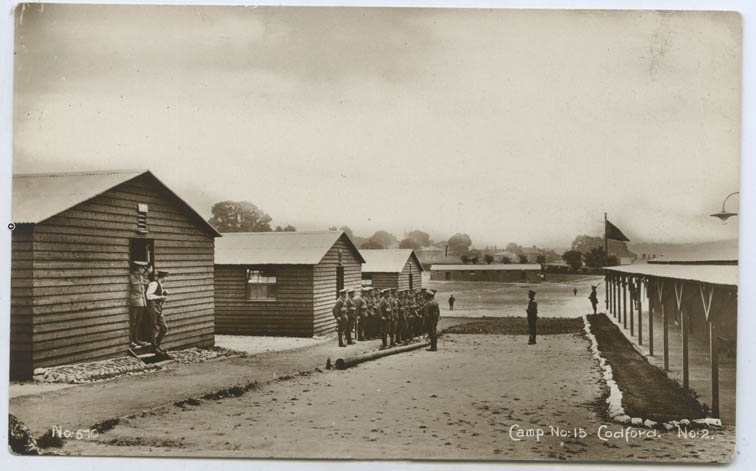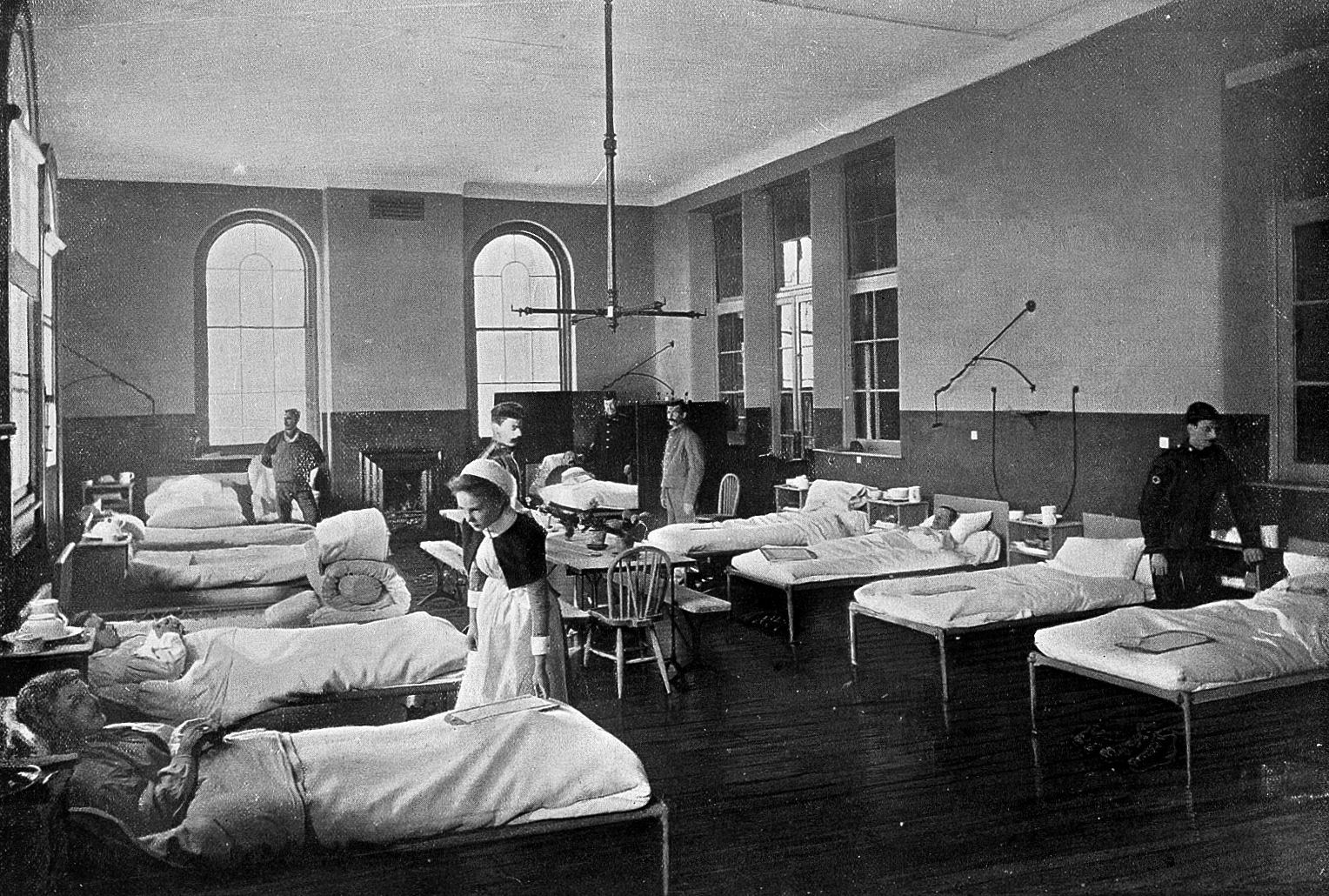George Cousin's underwent training with the 8th Suffolks while based at Codford Camp in Wiltshire.
In 1913, George emigrated to Canada, leaving Bristol on the SS Royal Edward and arriving in Halifax, Nova Scotia, on 5th February that year. He then moved to Toronto and joined the 48th Highlanders, a reserve regiment of the Canadian army. The following year, with the threat of war hanging over Europe, George decided to return to England on board the Cunard Line’s Alaunia disembarking in London on 20th August 1914. He returned home to his family in Melton and, on 3rd September, he enlisted into the Suffolk Regiment in Woodbridge.
George was posted to join the newly- raised 8th Battalion Suffolk Regiment and sent for training in Colchester, Salisbury Plain, and then Codford, in Wiltshire. While undergoing training, George met Jessie Violet Church whom he married on 13th February 1915 at St Philip’s Church, Clerkenwell, London.
On the 23rd July 1915, the 8th Suffolks received orders sending them to France on board the RMS Victoria, arriving in Boulogne on the 25th. By November, George had been attached to the 151st Company Army Service Corps when he was taken ill and required treatment in hospital. On recovery he returned to his home battalion, the 8th Suffolks.
At the start of the Battle of the Somme, the 8th Suffolks were in Brigade Reserve at Carnoy, having been relieved from the front line the night before. Although they did not take part in the initial attack, the battalion carried ammunition, materials and water to the men at the front and relieved them on the following morning. They remained on the front line for the next five days. For the rest of the year, the battalion remained on the Somme rotating between the front line and training.
In February 1917, the 8th Suffolks took over the front line trenches at Boom Ravine, opposite Grandecourt on the Somme. On the 17th they attacked and their objective was the village of Miraumont.
Zero hour was at 05:45 and the battalion went over the top in challenging conditions. The severe frost over the preceding month had broken and a rapid thaw had set in, making the ground a quagmire. The 8th Suffolks achieved their objectives and established a position one hundred yards from the village of Petit Miraumont, but not without heavy casualties. Allegedly, two deserters had made the details of the attack known to the German army and losses were significantly higher as a result.
The report of the battle states that three officers were killed and three wounded. In the Other Ranks (OR), twenty-five were killed, ninety-one wounded and eleven missing. A note also states that two OR attached to other units were wounded. One of the casualties was George Cousins who had been injured severely with a shrapnel wound to his chest.
George was treated for his wounds at The Royal Military Hospital, Netley near 
Southampton before being discharged from the services.
On 24th February, George was sent back to England for treatment at the Royal Victoria Hospital at Netley, near Southampton. His wife, Jessie, had been informed and on the same day sent a letter asking about her husband and which hospital he was in. Due to his wounds, George was no longer fit enough to return to the front line and was discharged on 1st March 1918. His address was given as “The Mariner’s Arms”, 26 New Street, Woodbridge where his father, Frederick, was now the landlord.
After the war was over George, Jessie, their two daughters, Gladys and Joan, and their son, Gordon, remained in Woodbridge before moving first to Ireland in 1921, where George served with the Royal Irish Constabulary. George and his family then returned to England, living in Dagenham, Essex, for the remainder of George’s life; he died in 1969 at the age of seventy-eight.
For his war service, George was awarded the 1914-15 Star, British War and Victory Medals, and the Silver War Badge.
